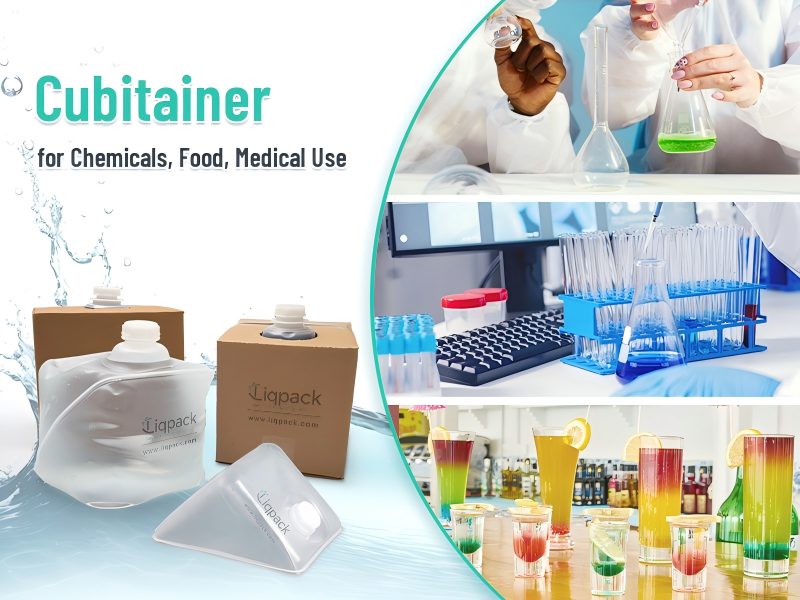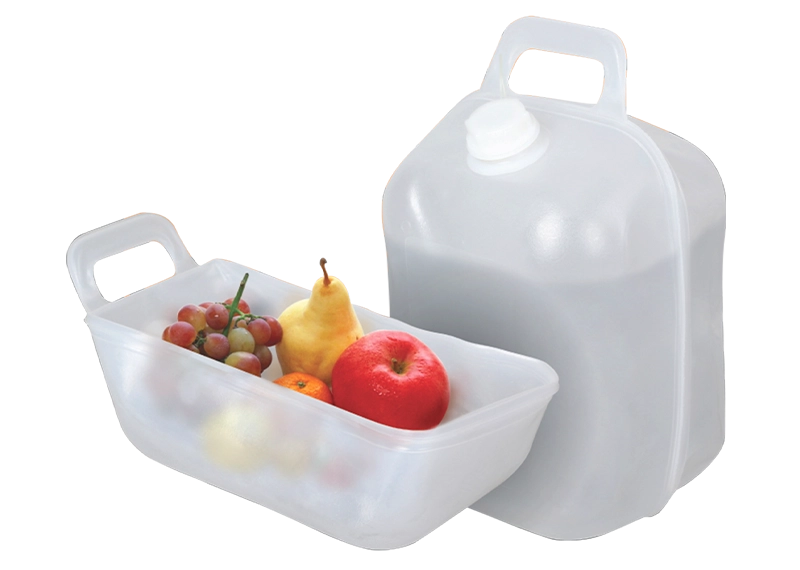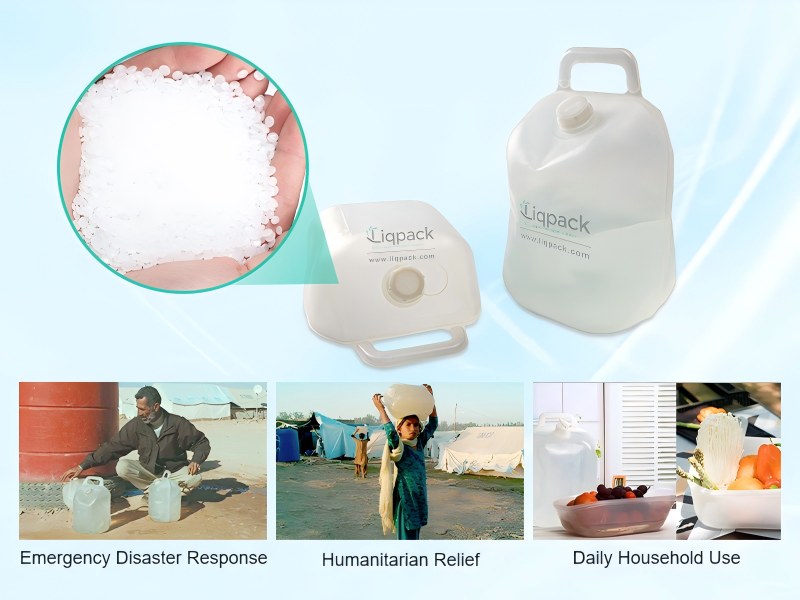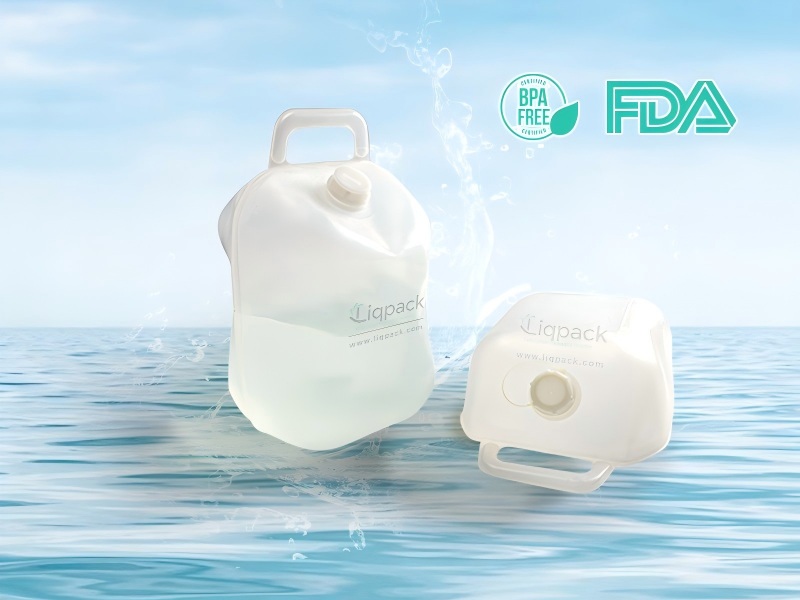
When it comes to carrying and storing water or other safe-to-hold liquids, choosing the right container is just as important as selecting the right gear for your outdoor adventure, expedition, or emergency kit. Among the many options, semi-collapsible jerry cans stand out for their balance between durability, flexibility, and portability.
By the end of this guide, you’ll be able to make an informed choice that fits your specific needs, whether that’s camping, overlanding, emergency preparedness, or humanitarian aid work.
Why Choose Semi-Collapsible Over Other Types?
Before buying, it’s helpful to compare them to other container types:
| Feature | Semi Collapsible Jerry Can | Rigid Jerry Can | Fully Collapsible Bag |
| Weight | Lightweight | Medium–Heavy | Ultra-light |
| Durability | High | Very High | Medium |
| Packability | Moderate | Low | Excellent |
| Stability | Good | Excellent | Poor |
| Cleaning | Moderate | Easy | Hard |
| Best Use | Outdoor & emergency | Long-term storage & transport | Backup, ultralight trips |
Semi-collapsible cans strike a balance: sturdy enough to withstand rough handling, yet flexible enough to pack and transport efficiently.
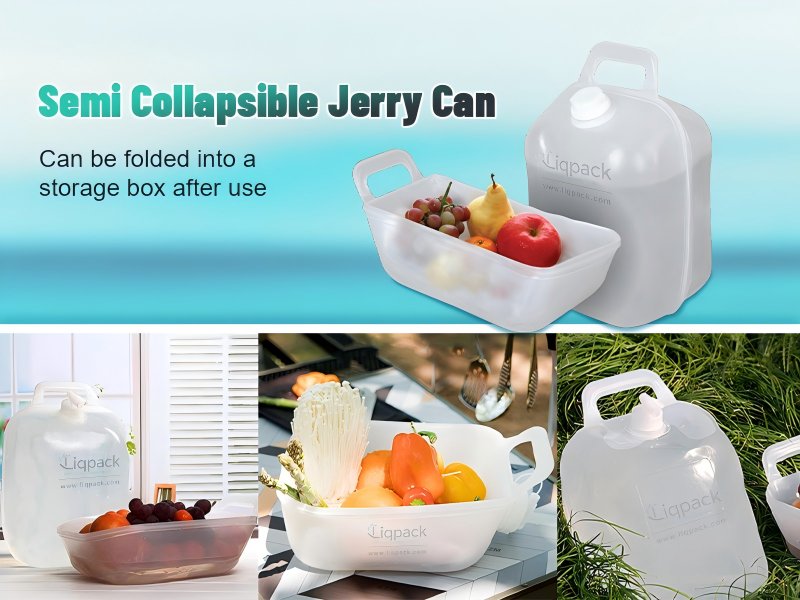
Materials: Why LDPE Matters
The most common material for semi-collapsible jerry cans is LDPE (low-density polyethylene). Here’s why it’s a top choice:
- Flexibility: LDPE bends without cracking.
- Impact Resistance: Handles drops and knocks better than brittle plastics.
- Food-Safe: Approved for potable water storage.
- Temperature Range: Performs well from about −40 °C to +60 °C.
- Lightweight: Easier to carry on long trips.
When shopping, ensure the jerry can is clearly labeled BPA-free and food-grade to guarantee safe drinking water storage.
How Much Capacity Is Needed?
One of the most crucial purchasing decisions is capacity. If it’s too small, you’ll run out of it all the time. If it’s too large, you can find it difficult to carry.
General guidelines:
- 5–10 liters: Perfect for solo travelers, short hikes, or quick day trips.
- 15–20 liters: Best balance for camping trips and small groups.
- 25 liters+: Suited for basecamps, families, or long expeditions where large storage is required.
Pro Tip: Instead of buying one huge can, consider multiple mid-sized cans. They’re easier to carry, provide redundancy (if one leaks, you don’t lose everything), and can be stored in different spots for convenience.
Design Features to Look For
When evaluating different semi-collapsible jerry cans, pay attention to these design elements:
Cap and Opening
- Wide-mouth caps (≥45 mm): Easier to fill, pour, and clean.
- Threaded caps with gaskets: Prevent leaks under pressure or movement.
- Spout or tap compatibility: For controlled dispensing at camp.
Handles
- Dual handles: One on top for carrying, one on the side for pouring.
- Ergonomic grip: Reduces strain when lifting heavy loads.
Base Design
- Reinforced base: Prevents tipping and provides stability on uneven surfaces.
- Flat-bottom construction: Makes stacking easier in vehicles or storage.
Translucency
- Sight strip or translucent walls: Allow you to see how much liquid remains.
- Graduated markings: Useful for rationing and cooking measurements.
Ribbing and Structure
- Reinforced ribbing: Adds stability without making the can completely rigid.
- Semi-flexible walls: Should compress slightly without collapsing entirely.
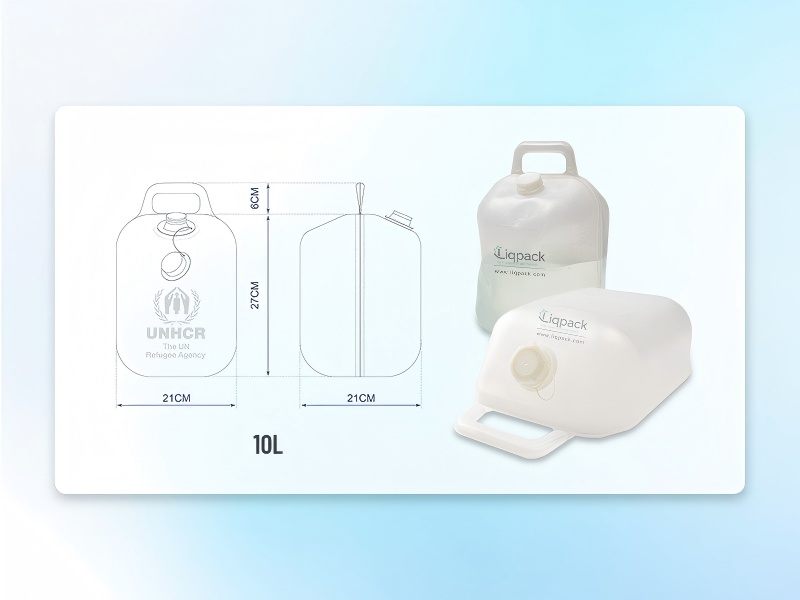
Climate and Environment Considerations
The best semi-collapsible jerry can for you depends on the environment where it will be used.
Cold Weather Use
- Choose LDPE (stays flexible in freezing temps).
- Leave headspace for expansion if water freezes.
- Look for glove-friendly caps and handles.
Hot Climate Use
- Opt for UV-stabilized LDPE to resist sun damage.
- Light-colored cans will absorb less heat.
- Avoid keeping items in the sun for long periods of time.
Mountain/Altitude Use
- Semi-collapsible design helps accommodate pressure changes.
- Ensure caps seal tightly to prevent leaks during expansion.
Durability: What to Check
Durability is critical for expedition or emergency use. Look for:
- Thick LDPE walls to withstand drops.
- Reinforced seams and joints.
- Replaceable gaskets and caps.
- Scratch-resistant finishes.
If possible, check reviews for long-term performance. Some brands offer spare parts kits, which are invaluable for field repairs.
Portability and Storage
A good semi-collapsible jerry can should:
- Be easy to carry: Dual handles and ergonomic grip.
- Compress slightly when empty: Saves space during transport.
- Fit common tie-down systems: Molded lugs or grooves for strapping in vehicles.
If you plan to use it for backpacking or long treks, prioritize lightweight models with flexible geometry.
Cleaning and Maintenance
A semi-collapsible jerry can is only as good as its hygiene. Choose designs that make cleaning simple:
- Wide openings for brushes or cleaning tablets.
- Smooth interior surfaces to prevent bacterial buildup.
- Removable spigots for easy disassembly.
Maintenance checklist:
- Rinse after every trip.
- Air dry with the cap off before storage.
- Store away from direct sunlight.
- Replace caps, gaskets, or spigots when worn.
Safety Considerations
Not all liquids are suitable for semi-collapsible jerry cans.
- Water and mild liquids only: Avoid fuel, solvents, or corrosive chemicals.
- Label containers clearly, especially if used for multiple purposes.
- Inspect regularly: Look for cracks, bulges, or odors.
- Check certifications: Look for food-safe, BPA-free materials.
Cost vs. Value
Prices vary depending on brand, size, and features.
- Budget options: $10–20; may lack UV protection or durable spigots.
- Mid-range: $20–40; good balance of features and durability.
- Premium: $40+; UV-stabilized, reinforced, long-lasting, often with spare parts included.
Top Buying Tips
- Buy two instead of one: Redundancy ensures reliability.
- Look for spare parts availability: Especially gaskets and taps.
- Match size to usage: Don’t overbuy—20 liters is heavy when full.
- Test before your trip: Fill with water, check for leaks, and practice pouring.
- Read reviews: Look for real-world feedback about durability and ease of use.
Common Mistakes Buyers Make
- Buying too large a size: A 25-liter can sounds useful until you realize it weighs 25 kg when full.
- Ignoring UV protection: Sunlight degrades plastics over time.
- Skipping spare parts: A broken gasket can render the whole can useless.
- Assuming that all plastics are created equal, only food-grade or LDPE plastics are suitable for use in drinking water.
- Not cleaning after use: Residual water can cause mold or bad odors.
Who Should Buy Semi-Collapsible Jerry Cans?
- Campers who need reliable water at their site.
- Backpackers looking for space-saving hydration.
- Overlanders transporting water across rugged terrain.
- Emergency preppers storing safe water at home.
- Humanitarian workers distributing water in field conditions.
A semi-collapsible jerry can is a smart investment if you fit into any of these groups.
A semi-collapsible jerry can is more than just a container—it’s a critical tool for ensuring reliable hydration and safe liquid storage in a wide range of scenarios. By balancing the best qualities of rigid and collapsible designs, these cans provide portability, durability, and practicality for everyone from casual campers to serious expedition teams.
When buying, pay close attention to material, capacity, design features, durability, and cleaning ease. Don’t overlook climate factors and spare parts availability.
- Liqpack

